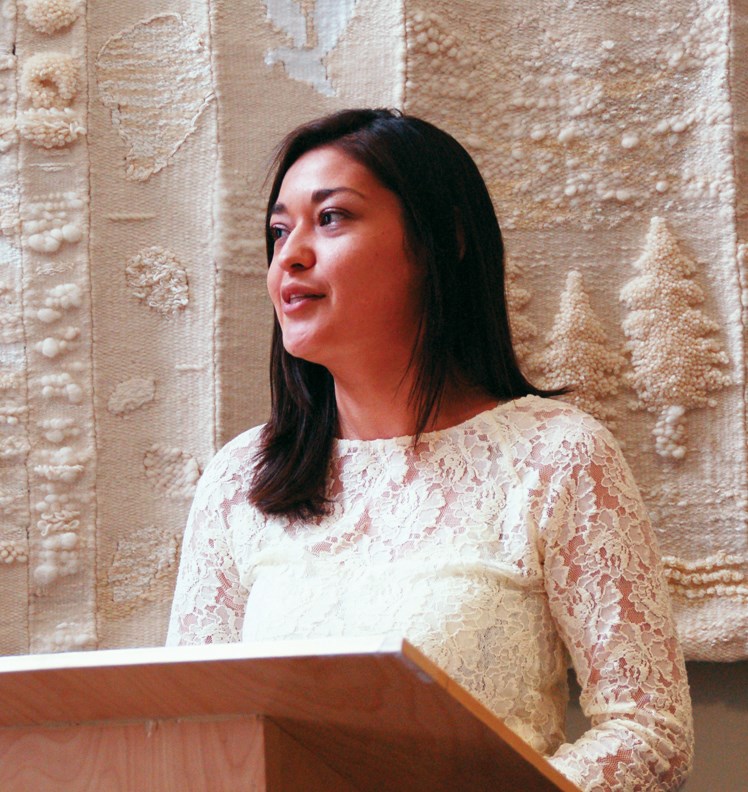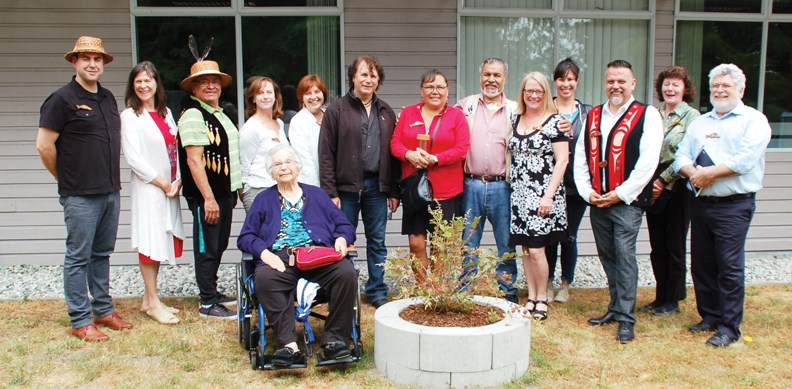In a ceremony on May 24, the Capilano University (Cap-U) Sunshine Coast campus building was renamed kàlax-ay – a name chosen by Sechelt (shíshálh) Nation elders which translates to ocean spray bush or ironwood in English.
Cap-U Sunshine Coast asked shíshálh elders for a traditional tree name for the campus building, to keep in line with a custom started at Cap-U North Vancouver.
“On the North Vancouver campus of Capilano University the buildings are named after local trees – arbutus, birch and so on,” Cap-U Sunshine Coast dean Julia Denholm said during the ceremony. “And over the last year or so we’ve also included the building names in the Tsleil-Waututh and Squamish languages to reflect and honour the fact that the North Vancouver campus rests on the traditional and unceded lands of the Squamish and Tsleil-Waututh peoples.”
Denholm noted the Sechelt campus, likewise, is on unceded shíshálh Nation land.
“So it’s a very happy privilege to be celebrating the naming of the Sunshine Coast campus after a tree that is important in shíshálh culture.”
Shíshálh elder Jamie Dixon told the small crowd assembled for the invitation-only ceremony that the kàlax-ay was an important bush to the shíshálh people as it was historically used as a hardwood to fashion clam digging sticks, arrow shafts, large fish hooks and skewers.
The buds on the bush were also said to forecast a good fishing season.
“When you have a lot of blossoms on that brush it means it’s going to be a good sockeye run,” Dixon said.
He noted the bush is still prevalent on the Coast today. “You can see it up and down all the highway from Port Mellon right to Egmont on both sides of the road,” he said.
After concluding his remarks Dixon and Denholm unveiled a plaque with the new campus name, surrounded by four carved salmon created by shíshálh artist Shain Jackson, placed just inside the entrance to the campus.

Ashley Joe, the post-secondary coordinator for the shíshálh Nation, spoke at the ceremony on behalf of her chief and council, thanking Cap-U Sunshine Coast for welcoming the traditional name “with such open arms.”
“I’d also like to thank our elders for the name that they chose,” Joe said.
“When I went to them they were very excited about today.”
She said the ceremony was very important to the shíshálh Nation because it signified a step toward reconciliation from the legacy of residential schools.
“Having this name will provide our Nation members with a greater sense of belonging on campus while they are there for their studies,” Joe said.
“The shíshálh Nation thanks Capilano University for including us in this act of reconciliation and looks forward to our continued and strengthened relationship with the university for the benefit of our future generations.”
Following the short ceremony and plaque unveiling, guests gathered outside the front of the campus for a photo with a kàlax-ay bush that was planted there as a remembrance of the name and the occasion.



